Spotted Lanternfly Egg Masses Intercepted in California
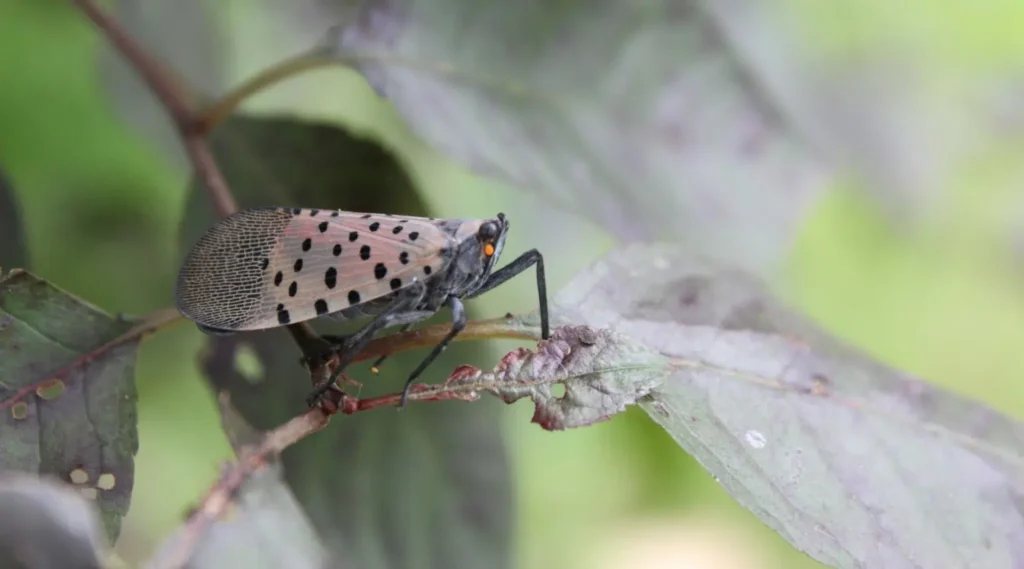
CAWG applauds the strategic planning undertaken by UDSA APHIS and CDFA in implementing preventative measures aimed at mitigating the spread of SLF
PUBLISHED ON
SACRAMENTO — The California Association of Winegrape Growers (CAWG) is bringing attention to the discovery of recent Spotted Lanternfly (SLF) egg masses on a shipment originating from New York and destined for Sonoma County. The egg masses were intercepted at the Truckee Border Protection Station in late March. This is the first finding of SLF egg masses in California.
CAWG is highlighting this now, because if other SLF egg masses have arrived in California undetected, they may produce adult SLFs in the coming weeks, with peak populations expected in late summer or early fall. SLF has the potential to affect the entire winegrape industry.
“This is essentially a public service announcement to raise awareness of how to identify a spotted lanternfly and the immediate action to take if discovered,” said Natalie Collins, President of the California Association of Winegrape Growers. “Spotted lanternflies have been found in 18 states and have proven to pose a serious threat to vineyards. These invasive insects feed on the sap of grapevines, while also leaving behind a sticky honeydew residue on the clusters and leaves. Their activities stress the plants, decrease vine health, and in some cases, can lead to plant death.”
CAWG applauds the strategic planning undertaken by UDSA’s Animal Plant Health Inspection Service (APHIS), and the California Department of Food and Agriculture (CDFA) in implementing preventative measures aimed at mitigating the spread of SLF. Additionally, CAWG commends CDFA’s inspection station teams for their diligent efforts in inspecting loads entering the state and the Pierce’s Disease Control Program for their research and mitigation of invasive pests, including the SLF.
Adult SLFs are typically visible from July through November and have the ability to fly, although not very far. The one-inch-long adults look quite different at rest than they do while flying. At rest, with their wings folded, they are a dull tan-gray color with black spots. During flight, the adult’s open wings reveal a bright red, black, and white pattern.
The SLF is an invasive planthopper native to Asia, first discovered in southeastern Pennsylvania in 2014, and has quickly spread to neighboring states. SLFs are described as “hitchhikers” as the egg masses can look like cakes of mud and are transported on trailers, RVs, semi-trucks, containers, trains, and other forms of shipping and transportation. Egg masses hatch in May/June and the adult SLFs are visible soon thereafter.
SLF Egg Masses Intercepted in California:
Below are the details of the SLF egg masses that were intercepted at the Truckee Border Protection Station:
- Egg masses were intercepted off a large (30 ft tall) metal art installation on March 27, 2024. The station staff inspected and found 11 viable egg masses on the artwork, resulting in the shipment being rejected at the station and refused entry into CA once the pest identification was confirmed by the CDFA lab staff.
- The rejected shipment was then returned to Nevada where officials further inspected the artwork off the truck and found an additional 30 egg masses in areas that were not accessible to station staff. Nevada officials also supervised the hot water power washing with detergent of the artwork.
- The shipment was later returned to the Truckee station for reinspection and was released to its destination under a Warning Hold Notice to allow for further inspection by county staff.
- Sonoma County staff inspected the shipment on April 4, 2024. The owner of the sculpture accommodated the county’s request to open all hollow beams and use cranes to move pieces for a thorough inspection, and the county staff found an additional three egg masses. The county staff concluded the inspection only after they were confident that no more egg masses were remaining.
Resources:
- If a SLF is found in California, reporting is easy at (800) 491-1899 or www.CDFA.CA.GOV/Plant/ReportAPest
- The California Department of Food and Agriculture (CDFA) says, “Snag it. Snap it. Report it.” For more information: CDFA – Plant Health – PDEPSpotted Lanternfly Pest Information (ca.gov)
- The Pierce’s Disease / Glassy Winged Sharpshooter Board within CDFA has designated the SLF as a pest to vineyards. The PD/GWSS website contains valuable information on how to detect the SLF and the efforts underway to keep the SLF out of California. For more information: https://www.cdfa.ca.gov/pdcp/board/spottedlanternfly.html
- Penn State Extension has information on its website relative to how Pennsylvania grape growers are dealing with SLFs in their vineyards. https://extension.psu.edu/spotted-lanternfly-management-in-vineyards
About the California Association of Winegrape Growers (CAWG): CAWG is a statewide nonprofit trade association advocating for California’s winegrape growers to ensure the sustainability of the winegrape industry. CAWG promotes the industry’s long-term success by advancing the adoption of sound public policies and fostering awareness and understanding of winegrape growers’ contributions to the economy, environment, and California communities. Learn more at cawg.org.
–California Association of Winegrape Growers
(Photo: Magi Kern on Unsplash)
Invasive Fruit Fly Quarantine Lifted in Santa Clara County
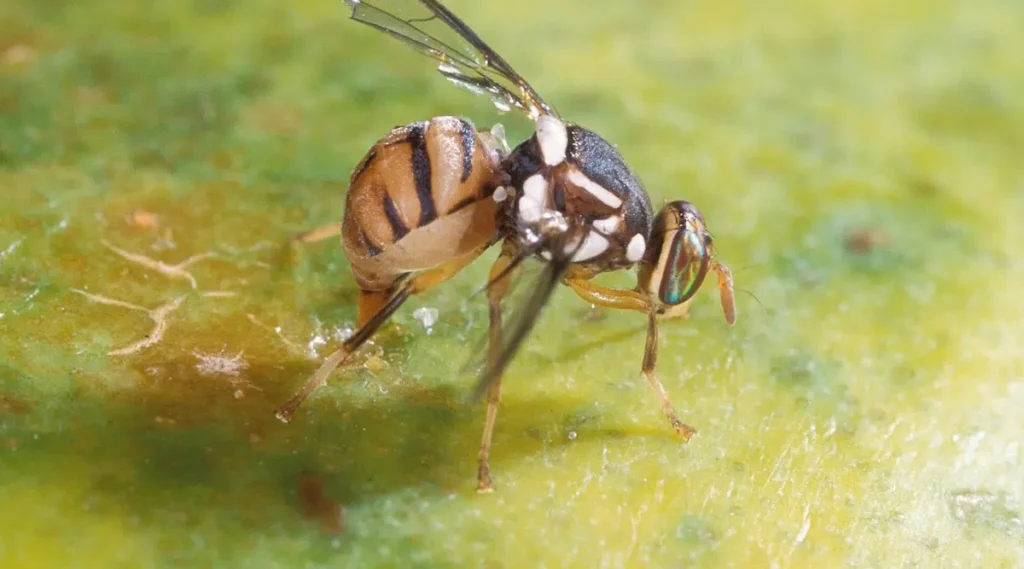
Ag officials urge residents to take steps to prevent future introductions of invasive species
PUBLISHED ON
SACRAMENTO — Thanks to the cooperation and diligence of Santa Clara County residents and local agricultural officials, the California Department of Food and Agriculture (CDFA), with the United States Department of Agriculture (USDA) and the Santa Clara County Agricultural Commissioner, has declared the end of the Oriental fruit fly quarantine in Santa Clara County following eradication of the invasive pest.
The declaration comes nearly nine months after officials first detected populations of the Oriental fruit fly in the area and established a quarantine encompassing parts of Sunnyvale, Santa Clara, Cupertino, San Jose, Milpitas, Mountain View, Saratoga and Campbell.
“Thanks to the responsiveness and cooperation of Santa Clara’s residents, and our partners at the Santa Clara County Division of Agriculture and the United States Department of Agriculture, we were able to quickly and safely eradicate this infestation of the Oriental fruit fly,” said Victoria Hornbaker, Director of CDFA’s Plant Health and Pest Prevention Services Division. “As with so many invasive species, when we can detect infestations early and respond promptly, we stand the best chance of protecting our backyard fruits and vegetables and ultimately safeguarding California’s agricultural heritage.”
During the quarantine, crops that are hosts for the invasive pest — which include more than 300 varieties, such as citrus and other fruits, nuts, vegetables and berries — were not allowed to be moved from the properties where they were grown. Commercial crops were required to meet stringent treatment or processing standards before being harvested or moved.
While the Santa Clara County quarantine area has been lifted, there are currently six other active fruit fly quarantines in California, which still threaten California’s natural environment, agriculture and economy.
As the temperatures rise and vacationers ramp up their travel plans, local agricultural officials are urging residents to refrain from bringing back potentially infested produce from their trips. While you’re at home, we urge residents to continue to stay vigilant for signs of invasive pests and cooperate with local officials. To help prevent any future introductions of invasive species, residents should follow these guidelines:
- Cooperate with agricultural officials and allow them access to your garden to place traps, inspect plants, conduct necessary treatments or remove potentially infested produce.
• Determine if your property is located within an active quarantine area by visiting CAFruitFly.com.
• Buy fruit trees and vegetable plants from licensed California nurseries, as receiving agricultural goods from uncertified sources can spread invasive pests. Source your plants locally and responsibly. To search for a licensed nursery near you, visit CDFA’s Directory of Licensed Nurseries.
• Inspect your garden for signs of invasive fruit flies or maggots and report any findings to CDFA at 1-800-491-1899 or your local county agricultural commissioner’s office
• When entering the United States from another country, avoid bringing agricultural products — including fruits or vegetables. Help us protect our agricultural and natural resources and California’s unique biodiversity from invasive fruit flies — please Don’t Pack a Pest (www.dontpackapest.com) when traveling or mailing/receiving packages.
To learn more about invasive species and how to protect the county’s fruits and vegetables, visit CaFruitFly.com or ag.santaclaracounty.gov.
–California Department of Food and Agriculture
(Photo: USDA/Scott Bauer, Public domain)
No Love for Mealybug Menace of Vineyards
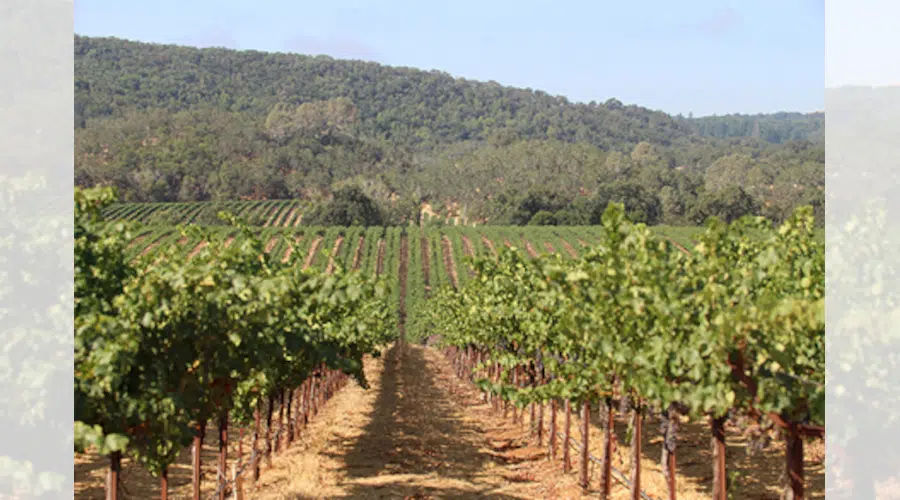
Keeping vine mealybugs from meeting and mating is a big deal, considering they can produce multiple generations over the growing season
PUBLISHED ON
WASHINGTON — Fake pheromones offer a way to foil the love lives of vine mealybugs and keep populations of these prolific, soft-bodied insect pests from reaching damaging levels in vineyards of wine, raisin and table grapes.
Producing large amounts of the chemical insect sex attractants for release into the air to prevent lovelorn male mealybugs from finding females to mate with can be difficult and expensive. Now, however, clues to less costly synthetic pheromone alternatives are emerging from Agricultural Research Service (ARS) scientists’ studies of the pest’s olfactory system.
Keeping vine mealybugs from meeting and mating is a big deal, considering they can produce multiple generations over the growing season. Unchecked, the pests suck sap from the grape plants, weakening them and reducing their fruit yields and quality. They also secrete honey dew, a waste that can drop onto grape clusters and promote the growth of black sooty mold—both of which can diminish the fruit’s marketability. Adding insult to injury, and perhaps most importantly, the pests also transmit a group of viruses that cause grape leafroll diseases. The presence of these viruses can necessitate the destruction of entire vineyards when infection rates hit 25 percent or higher.
Using a genomic map of the vine mealybug together with sophisticated analytical procedures, the scientists discovered two key olfactory receptors (from among 50 total) that alert male mealybugs that love is in the air in the form of lavandulyl senecioate, the sole chemical constituent in a female’s pheromone.
The receptors are so specific that no other known chemical odorant found in nature will prompt the males to take flight in search of females to mate with, noted Jacob Corcoran, an entomologist with the ARS Biological Control of Insects Research Laboratory in Columbia, Missouri.
To confirm this specificity, Corcoran and colleague plant pathologist Walter Mahaffee at the ARS Horticultural Crops Disease and Pest Management Research Unit in Corvallis, Oregon, used a specialized cell line cultured in the lab to express (examine the function of) two of the vine mealybug’s olfactory receptors. Next, they exposed the cells to various doses of lavandulyl senecioate. This triggered the activation of cell signaling pathways indicating the receptors’ detection of the pheromone. The cells were also exposed to grapevine odors that the mealybugs normally find attractive in nature. However, no signaling pathways were activated, confirming the two receptors were highly specific to the sex pheromone compounds.
With this method, the scientists have begun contemplating more diabolic ways to mess with the pest’s love life.
On the one front, they envision using the method to screen for molecules called antagonists that could be used to deactivate the pest’s olfactory receptors in nature, preventing their detection of pheromone and dooming male vine mealybugs to a sad, lonely life of buggy bachelorhood. Or, in the reverse, proteins called agonists could be formulated to put the receptors in “overdrive,” compelling males to chase phantom pheromone signals where none exist.
On yet another front, the researchers are pursuing the use of the olfactory receptors in biosensors—pheromone-sniffing devices that can be deployed throughout a vineyard to alert growers to where and when the pest’s numbers are on the rise so countermeasures can be timed accordingly.
As the scientists see it, the use of pheromone-based tactics like mating disruption is part of a multi-pronged fight against the mealybug that includes the application of insecticides, organically compatible products like natural oils and biological or cultural control methods.
Details on their latest advances on the anti-olfactory front against the pest were reported in the January 2024 issue of Current Research in Insect Science.
The Agricultural Research Service is the U.S. Department of Agriculture’s chief scientific in-house research agency. Daily, ARS focuses on solutions to agricultural problems affecting America. Each dollar invested in U.S. agricultural research results in $20 of economic impact.
–USDA ARS
(Photo: ARS scientists examine new ways to foil love lives of costly vineyard pest. (Photo by Jessica Griffiths D3881-1))
EPA Approves Section 18 Emergency Registration Request for Kasugamycin on Almonds

The Environmental Protection Agency (EPA) and California Department of Pesticide Regulation recently accepted a Section 18 petition to allow the use of Kasumin 2L (kasugamycin) to control bacterial blast (Pseudomonas sp) in almonds. The registration allows up to two applications under anticipated cold or freezing conditions on almonds at a use rate of 64 fl. oz. per acre from February 2, 2024, through petal fall. Application after petal fall is prohibited. Kasugamycin may only be used during bloom.
The approval applies to the counties of Butte, Calaveras, Colusa, Contra Costa, Fresno, Glenn, Madera, Merced, Placer, San Joaquin, Stanislaus, Sutter, Tehama, Yolo, and Yuba.
Growers interested in this application are heavily encouraged to reference the Almond Board of California’s Honey Bee Best Management Practices as well as the Quick Guide for Applicators (in English & Spanish) to ensure pollinator health is maintained. As stated in these practices, growers should only use applications when absolutely necessary and should only make applications in the late afternoon or evening, when bees and pollen are not present.
Please contact your local County Ag Commissioner’s office for further details if interested in using this product.
Visit the California Department of Food and Agriculture website for a full list of County Ag Commissioners’ offices as well as contact information for each.
USDA invests more than $100 million in fruit fly eradication efforts
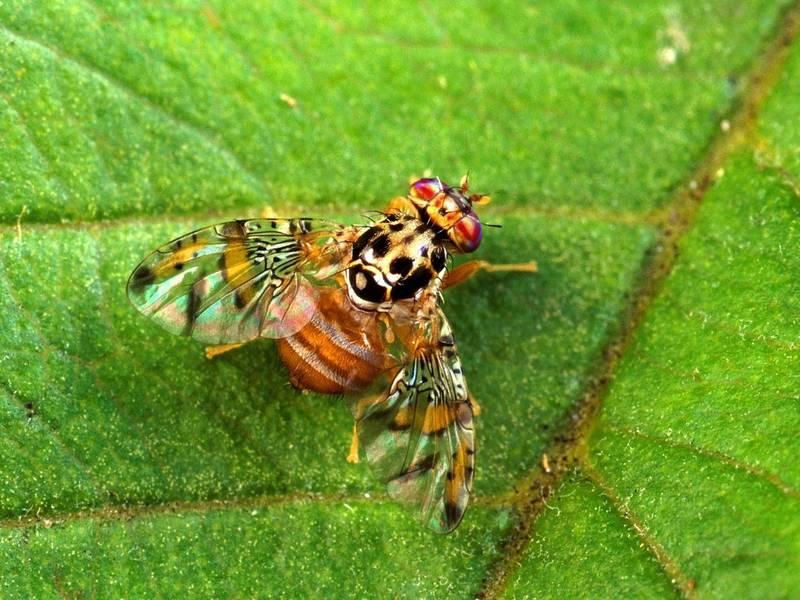
New DPR Updates for Soil Fumigant & Non-Soil Fumigant Licensees

Under the California Department of Pesticide Regulation’s (DPR) recently amended Certification and Training regulations, currently licensed individuals who want to continue to perform pest control using either soil fumigant or non-soil fumigant pesticides next year must obtain the appropriate new licensing category starting January 1, 2024.
The new Soil Fumigation (Category L) is required for individuals who perform pest control using a pesticide labeled as a fumigant to control soil pests in sites including fields, forests, golf courses, greenhouses, and individual tree or vine hole sites. Individuals who previously performed this type of pest control under the Field Fumigation (Subcategory O), which is no longer a subcategory after December 31, 2023, will have to obtain the new Category L if they wish to continue performing soil fumigations.
***Contact your local County Ag Commissioner to confirm that the county is exercising discretion.***
If you are looking for more information on this regulation package please visit –> https://www.cdpr.ca.gov/docs/license/cert_training.htm
APHIS Expands Three Fruit Fly Quarantines
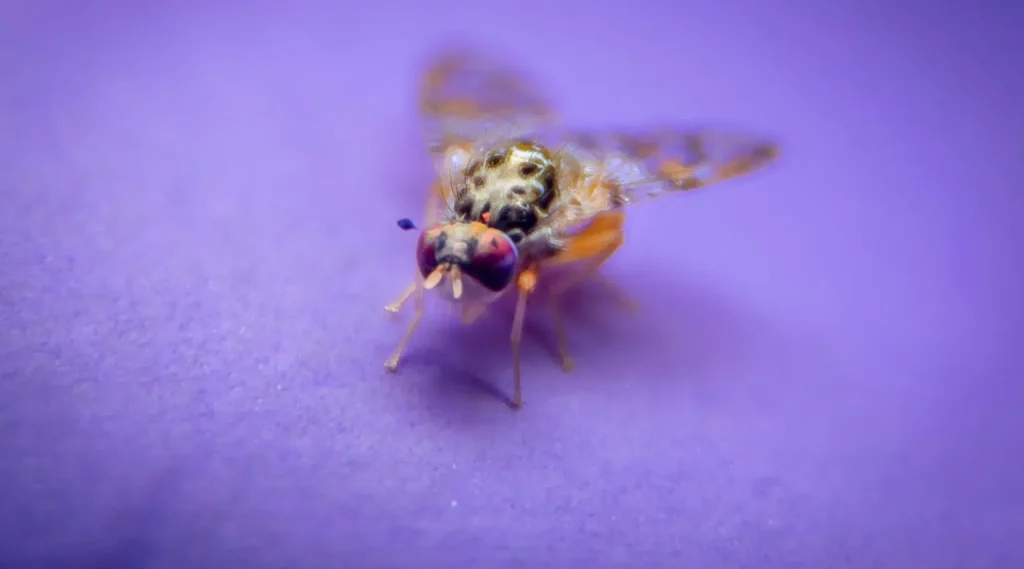
APHIS is applying safeguarding measures and restrictions on the interstate movement of regulated articles
LOS ANGELES CO., Calif. — On November 15, 2023, the Animal and Plant Health Inspection Service (APHIS) and the California Department of Food and Agriculture (CDFA) expanded a Mediterranean fruit fly (Ceratitis capitata; Medfly) quarantine and a Zeugodacus tau fruit fly quarantine in Los Angeles County. Furthermore, on November 21, APHIS and CDFA expanded a Queensland fruit fly (Bactrocera tryoni; QFF) quarantine in Ventura and Los Angeles Counties.
The expansion of the Medfly quarantine is in response to the confirmed detection of an unmated female Medfly by CDFA on November 8, from a trap in an avocado tree in a residential area. As a result of this detection, the Leimert Park area quarantine increased by 8 square miles to 98 square miles. APHIS and CDFA established the original Medfly quarantine on October 18 following the confirmed detection of two flies in the Leimert Park area on September 27, and expanded the quarantine on November 1 and November 7 following detections of additional flies. There is no commercial agriculture in the quarantine area.
The expansion of the Z. tau quarantine is in response to the confirmed detection of two adult male Z. tau by CDFA on November 4, from traps in ornamental trees in residential areas. As a results of these detections, the Stevenson Ranch area quarantine increased by 18 square miles to 128 square miles. APHIS and CDFA established the original Z. tau quarantine on July 11 following the confirmed detection of nine flies in the Stevenson Ranch area between June 7 and July 6, and expanded the quarantine on August 15, September 14, and October 3 following detections of additional flies. There is no commercial agriculture in the quarantine area.
The expansion of the QFF quarantine is in response to the confirmed detection of an adult male QFF by CDFA on November 13, from a trap in an ornamental tree in a residential area. As a result of this detection, the Thousand Oaks area quarantine increased by 14 square miles to 90 square miles. APHIS and CDFA established the original QFF quarantine on October 18 following the confirmed detection of two flies in the Thousand Oaks area on August 23 and October 9. There are a total of 3,379 acres of commercial citrus, avocado, stone fruits, and berries in the quarantine area.
APHIS is applying safeguarding measures and restrictions on the interstate movement of regulated articles to prevent the spread of Medfly, Z. tau, and QFF to non-infested areas of the United States, as well as to prevent the entry of these fruit flies into foreign trade. APHIS is working with CDFA and the Agricultural Commissioners of Los Angeles and Ventura Counties to respond to these detections following program guidelines for survey, treatment, and regulatory actions.
These quarantine expansions are reflected on the APHIS fruit fly website, which contains a description of all current federal fruit fly quarantine areas. APHIS will publish a notice of these changes in the Federal Register.
For additional information on the quarantine areas, please contact Fruit Fly National Policy Manager Richard Johnson at 301-851-2109 or richard.n.johnson@usda.gov.
–Dr. Mark L Davidson
Deputy Administrator
Plant Protection and Quarantine
USDA APHIS
Original article link courtesy of Morning AgClips
(Photo: U.S. Department of Agriculture, Public domain)
Valley Citrus Growers Prepare for 2023 Frost Season

Below-freezing temperatures lasting more than a few hours have the ability to impact all citrus varieties. (Photo by Jeroen van Nierop on Unsplash)
EXETER, Calif. — The 2023 frost season is underway for San Joaquin Valley citrus growers. That means growers will be closely monitoring weather forecasts to prepare for any cold spells that may sweep through the valley in the coming months.
While cold temperatures benefit the crop by maintaining fruit quality, improving color, and sending trees into dormancy long periods of below-freezing temperatures are of concern to growers.
“Cold temperatures aren’t a bad thing for citrus. In fact, they can have positive effects on the fruit and trees,” says California Citrus Mutual President/CEO Casey Creamer. “It’s when below-freezing temperatures last for long periods of time that we get concerned there could be damage to the crop.”
Below-freezing temperatures lasting more than a few hours have the ability to impact all citrus varieties. However, mandarins are often at the greatest risk due to their thin peel.
To combat below-freezing temperatures citrus growers run wind machines and irrigation. These techniques help raise grove temperatures and alleviate any negative effects of long cold periods.
California Citrus Mutual (CCM) aids growers during the frost season by running the Weather Watch Program. Through this program, CCM employs weather stations throughout the region and provides growers with daily citrus-specific forecasts. The program runs from November 15 through March 15 each year.
–California Citrus Mutual
